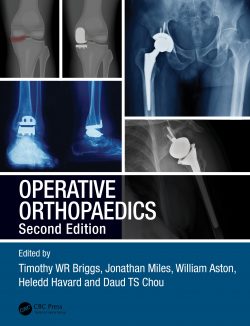This book provides an essential overview combining both clinical and fundamental research advances in myotonic dystrophy. The pathomechanism of myotonic dystrophy has long been unclear, but in the past decade, our understanding has shifted to a novel disease mechanism concept: “RNA disease”. Parallel to these advances in elucidating the pathophysiology, translational research is also progressing rapidly. The current challenge lies in assessing the effectiveness of treatment, and as such, there is a growing interest in observational studies of the disease’s various clinical symptoms.
The book introduces readers to the molecular mechanisms within each organ and the resultant clinical features, which are presented together. In particular, it focuses on the central nervous system, since the pathology of the brain (central nervous system manifestation) has rarely been addressed systematically and will pose a persistent challenge, even if therapies have greatly advanced in the future. In addition, the book addresses the latest developments, such as research using patient-derived iPS cells and therapeutic research.
Myotonic Dystrophy provides essential information for neurologists and researchers with an interest in muscle disease, including muscular dystrophy. Furthermore, since the disease involves various complications of the brain, heart, metabolism, etc., the book will be of great value to clinicians and researchers in the cardiovascular sciences, endocrinology, diabetes, dementia, and neuropsychology, as well as genetic specialists.
1. Genetics of myotonic dystrophy (including cDM and DM2)
2. Basic molecular pathomechanism
3. Clinical features in skeletal muscle and their underlying molecular mechanism
4. Clinical features in heart and their underlying molecular mechanism
5. Clinical features of central nervous system
6. Pathological changes in DM brain
7. Molecular defect in DM central nervous system
8. Respiratory feature in DM
9. Glucose intolerance in DM
10. Lipid metabolism in DM
11. Dysphagia in DM
12. DM patient-derived iPS cells
13. Therapeutic development in DM.
“This book is suitable for neuromuscular medicine subspecialists, healthcare providers involved in the care of myotonic dystrophy patients, and clinical basic science researchers. The book meets the needs of this audience. … This book stands out as an excellent reference on myotonic dystrophy.” (Eduardo De Sousa, Doody’s Book Reviews, June 28, 2019)
Masanori P. Takahashi, M.D., Ph.D.
Department of Functional Diagnostic Science, Osaka University Graduate School of Medicine, Japan
Tsuyoshi Matsumura, M.D., Ph.D.
Department of Neurology, National Hospital Organization Toneyama National Hospital, Japan
This book provides an essential overview combining both clinical and fundamental research advances in myotonic dystrophy. The pathomechanism of myotonic dystrophy has long been unclear, but in the past decade, our understanding has shifted to a novel disease mechanism concept: “RNA disease”. Parallel to these advances in elucidating the pathophysiology, translational research is also progressing rapidly. The current challenge lies in assessing the effectiveness of treatment, and as such, there is a growing interest in observational studies of the disease’s various clinical symptoms.
The book introduces readers to the molecular mechanisms within each organ and the resultant clinical features, which are presented together. In particular, it focuses on the central nervous system, since the pathology of the brain (central nervous system manifestation) has rarely been addressed systematically and will pose a persistent challenge, even if therapies have greatly advanced in the future. In addition, the book addresses the latest developments, such as research using patient-derived iPS cells and therapeutic research.
Myotonic Dystrophy provides essential information for neurologists and researchers with an interest in muscle disease, including muscular dystrophy. Furthermore, since the disease involves various complications of the brain, heart, metabolism, etc., the book will be of great value to clinicians and researchers in the cardiovascular sciences, endocrinology, diabetes, dementia, and neuropsychology, as well as genetic specialists.
Provides an overview while also connecting clinical and fundamental research achievements
Introduces the molecular mechanisms within each organ and the resultant clinical features, especially focusing on central nervous system
Addresses the latest topics such as research using patient-derived iPS cells and therapeutic research
· Provides an overview while also connecting clinical and fundamental research achievements
· Introduces the molecular mechanisms within each organ and the resultant clinical features, especially focusing on central nervous system
· Addresses the latest topics such as research using patient-derived iPS cells and therapeutic research





